 This coverage is made possible through the generous support of Marty and Kathy Hall and A Hall Mark of Excellence Award. To learn more about A Hall Mark of Excellence Award, or to learn how you can support FasterSkier’s coverage, please contact info@fasterskier.com.
This coverage is made possible through the generous support of Marty and Kathy Hall and A Hall Mark of Excellence Award. To learn more about A Hall Mark of Excellence Award, or to learn how you can support FasterSkier’s coverage, please contact info@fasterskier.com.
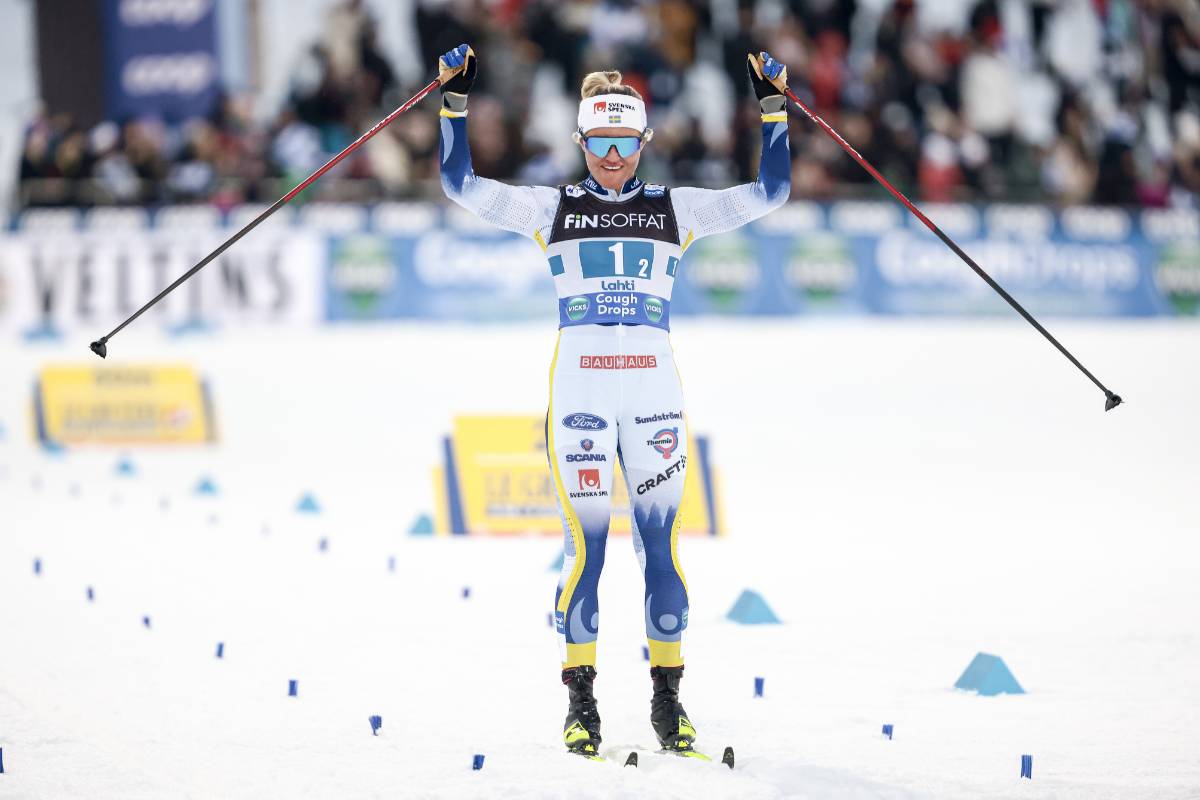
As the World Cup returned to Europe in Lahti, Finland, Friday, it was those tricky conditions: temps hovering around zero degrees Celsius; mix of wet, man-made, and natural snow that leaves even the best wax technicians wracking the corners of both brain and wax box to give their skier’s the best tools for the job. With a Classic Team Sprint on a steep-defined Lahti course, there was no getting around the factor that ski and wax selection play in racing. On Friday, those factors defined the race in both the Men’s and Women’s field, leaving behind broken bits of skis, poles, and a many more hypotheticals to how the race may have played out in Lahti’s dimly lit snow.
The results would prove more of an equivocation than a final conclusion regarding those race conditions. At the end of both the Women’s race and Men’s race, the top-seeded teams ( with the best ranked sprinters in the world) crossed the line well out in front of the rest of the field. In the Women’s race, Linn Svahn (SWE) skied what amounted to a parade lap, easing up to a stride in the finishing stretch, to give the Sweden I team (with her partner, Jonna Sundling) the win. Entering the final lap, the Men’s race remained close enough that Johannes Hoesflot Klaebo still had to stamp his sprinting authority over the rest of the field. He did so handily, giving the Norway I team (with partner, Paal Golberg) a comfortable win.
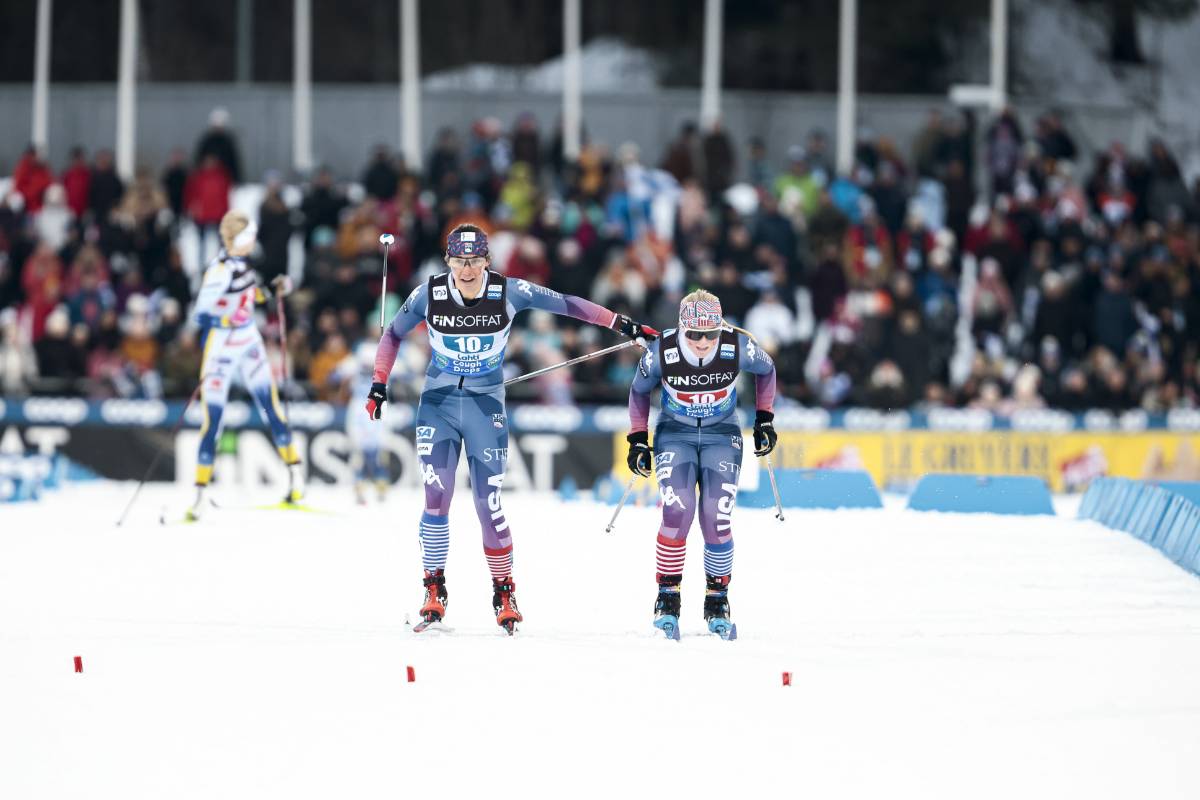
In the space leading up to those results, however, there were falls from clear-cut competitors, and personnel decisions that shaped the race. The latter category was the most important feature of the day for the US Ski Team. Tight turnarounds from the North American World Cup tour and American Birkebeiner—combined with the math regarding Team Sprints that dictates they no longer count towards the Overall, Distance, and Sprint, World Cup classifications—saw the leading sprinters from the US Team absent from the start list. In the Women’s field, Sammy Smith teamed with Julia Kern to form the only US Team. In the Men’s field, two teams started: USA I with Luke Jager and Zanden McMullen, and USA II with Logan Diekmann and Michael Earnhart. Neither Men’s team made it through the qualifying round in the top 15, leaving the US absent from the Men’s Team Sprint Final. The Women’s team of Smith and Kern, meanwhile, qualified for the final in 14th, and finished the Final in 15th.
The result didn’t diminish the valuable experience in a unique event for a decidedly young US squad. ”I think the first race after travel is always the most difficult—it takes time to get your legs under you again,” said Sammy Smith post-race. “I hope today’s race will act as a good prep for Sunday’s sprint and the rest of period 4.” Smith also drew a clear lesson from starting within the field: “I think it takes time to learn how to ski in a pack of 15 at sprint pace. It’s definitely very aggressive skiing, which is something I know I need to work on.”
Women’s Team Sprint Final
The Women’s Team Sprint start list was headlined by two powerhouse Swedish teams, Sweden I seeing Sundling combine with Svahn fresh off the pair’s dominant performances in Minneapolis, and Sweden II seeing Maja Dahlqvist combine with Frida Karlsson. The Germany I pairing of Katharina Hennig and Laura Gimmler completed qualifying in third place, giving strong indications that the Germans’ continued prowess in Team events would be at play in the Final. The race’s classic technique also gave the home Finnish crowd reason to hope that Finland I team of Krista Parmakoski and Johanna Matintalo, and Finland II team of Anne Kyllonen and Jasmi Joensuu could have an outside chance at the podium. Norway I, with Lotta Udnes Weng and Kristine Stavaas Skistad, and Norway II with Kristin Austgulen Fosnaes and Mathilde Myhrvold also looked to bump the Norwegians onto the podium.
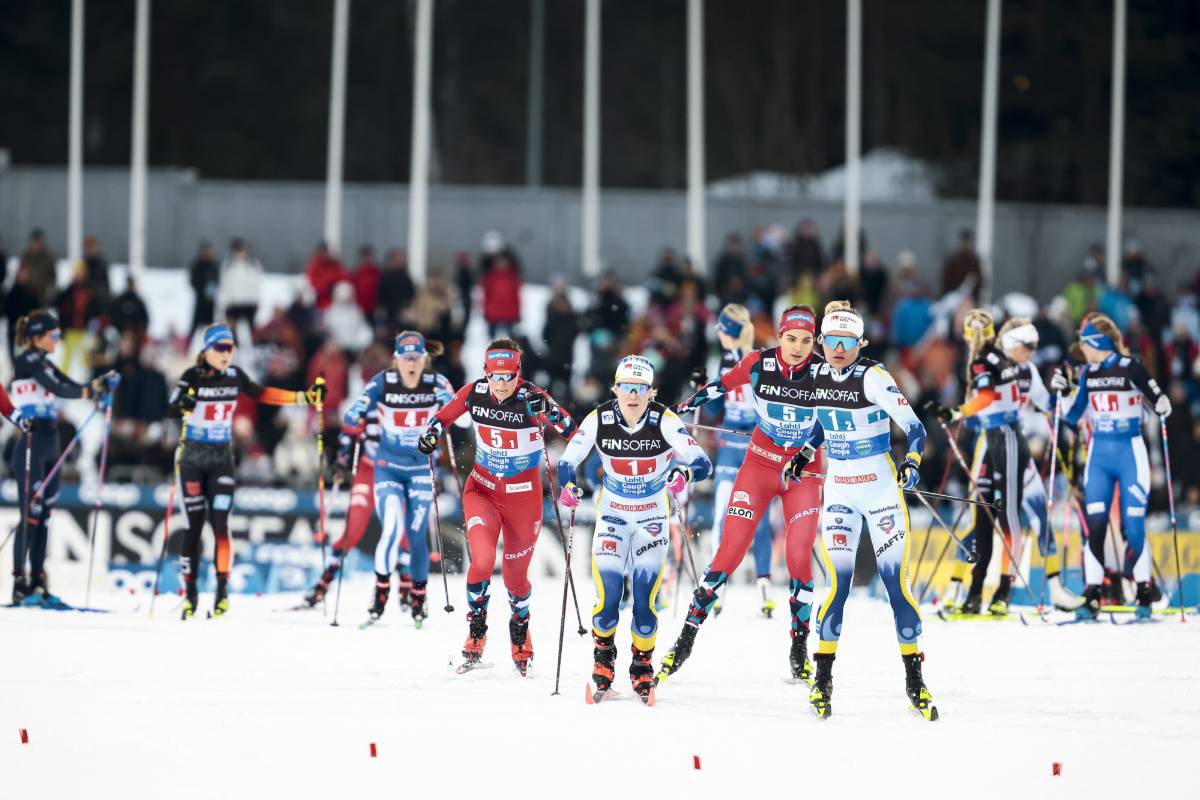
The Lahti course featured a steep climb right out of the start, with a “J-bend” feature on the descent back to the stadium that made the course as technical as it was challenging. The Swedish teams, with Sundling and Karlsson, wasted little time in driving a hard pace, and by the first exchange, they had stretched the field out to a snapping point. The first exchange gave way to a second leg that was heavy on sprinting talent, with Svahn, Dahlqvist and Skistad notable in a lead pack that mixed in with more distance-seasoned skiers like Gimmler and Matintalo. Skistad was left with a slight gap to make up for her Norway I team to Sweden’s I and II, but Svahn and Dahlqvist drove a considerably more subdued pace than their relay partners in the early goings.
Svahn put a small burst in over the top of the Lahti course climb to give herself a clear field into the downhill. Dahlqvist, in second, did the same and found momentary success. In an instant though, Dahlqvist had one of those klister moments in those types of conditions. Her wax pocket caught just enough to wreak havoc on her balance, and she went down hard. Behind, Gimmler looked to avoid Dahlqvist by swerving, but the German plowed through the outstretched ski of Dahlqvist. The nature of the fall shaped the entire nature of the race. Gimmler was able to recover with only a second or two lost on the leading pack. Dahlqvist, though, pulled up with a ski that had taken a coreshot. She glided fine with skis in parallel, but as she approached the bend leading to the Lahti stadium, she lifted her right ski and revealed that it was shredded. Some thirty seconds passed before Dahlqvist was clipped back into a spare ski and on her way to the exchange. Sweden II was effectively out of the race.
Svahn was the only skier in the lead pack who’s speed on the downhill was wholly unaffected by the Dahlqvist fall. As a result, a slight advantage turned into a race-concluding one. In the exchange to Sundling, Sweden I had a 20 second gap on the rest of the field. Through subsequent exchanges, they would open that gap little-by-little, until it stretched to 25 seconds at the finish-line.
The result turned all eyes towards the chase pack for second and third place, where those in Lahti had a whole lot to look at. The chase pack that emerged from the second exchange was clear color-coded, two red suits belonging to Norway, two blue suits belonging to the home Finland teams. Another would join eventually, as the black suit of Germany’s Hennig, then her teammate Gimmler, slowly made the gap from the early fall disappear.
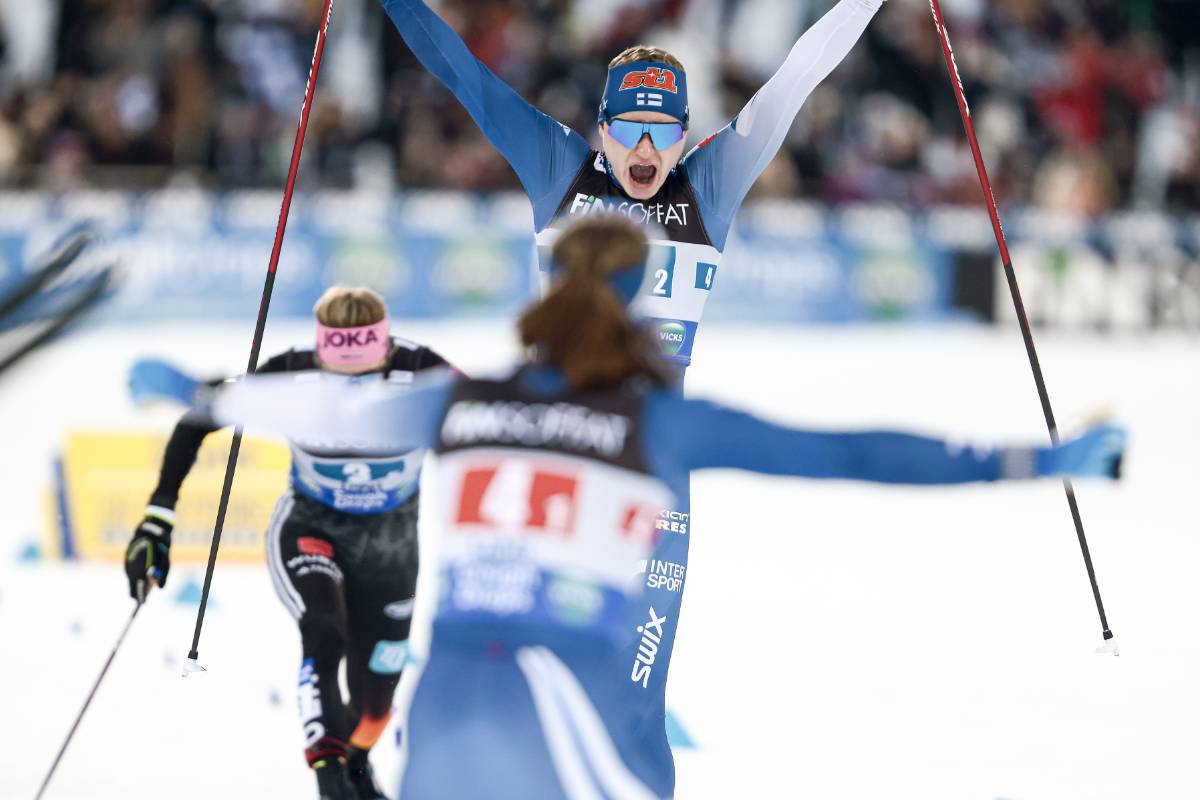
Into the last exchange, Norway I’s Weng missed the shoulder of her teammate, Skistad. The Finland I team and Germany I team emerged with a significant gap over the leg’s best sprinter as a result. Matintalo sensed it as she hit the steep part of the Lahti climb, and rushed to snap the field so as to not give Skistad a gap that she could overcome in a sprint. Gimmler matched the effort, but without the same punch. That left Finland I to sprint for an improbable second place podium finish, and Gimmler to hold off the late sprint that Skistad did unleash, in order to give the Germany I team a resilient third place.
Men’s Team Sprint Final
The Men’s Team Sprint Final saw a similar dynamic on the start line as the Women’s field. Norway I’s Paal Golberg and Johannes Hoesflot Klaebo and Norway II’s Haavard Solaas Taugboel and Even Northug would be looked at to set the pace which a bevy of contending teams—France I’s Jules Chappaz and Richard Jouve, Italy I’s Elia Barp and Federico Pelligrino, Switzerland I’s Janik Riebli and Valerio Grond, and Finland I’s Iivo Niskanen and Lauri Vuorinen—would follow.
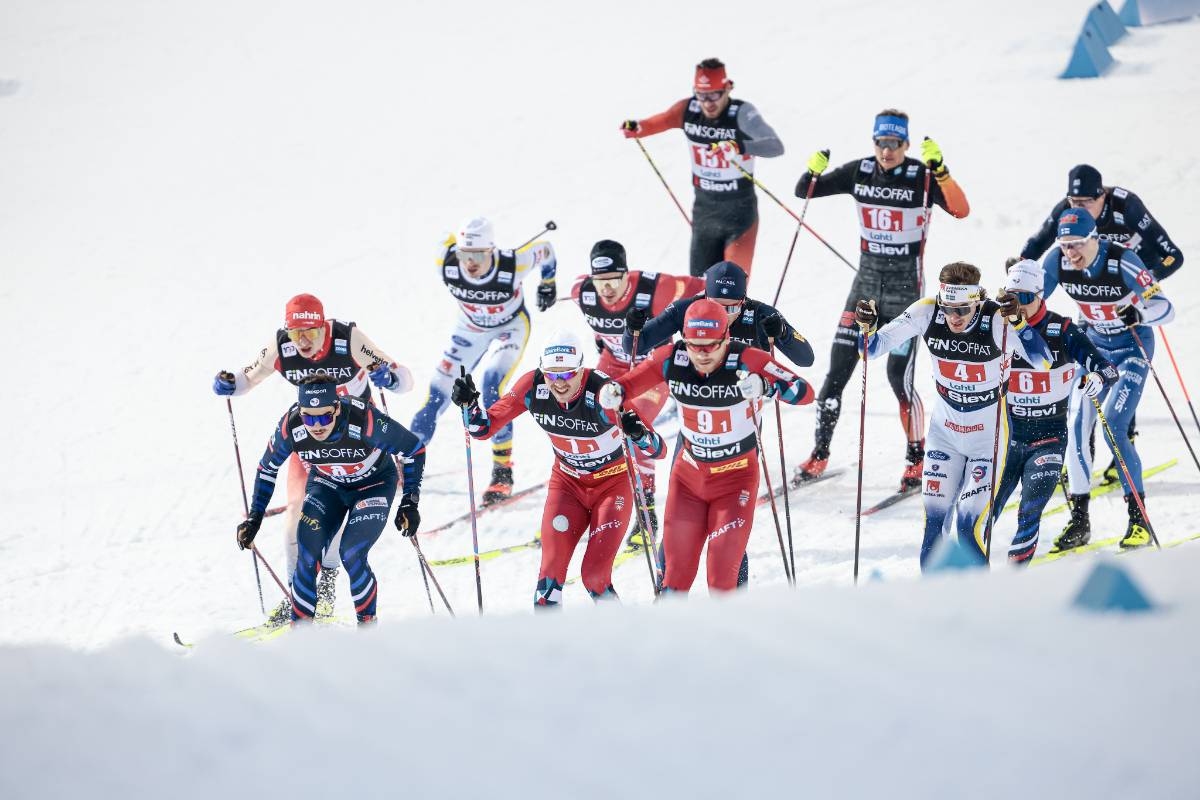
The Norwegians favored a much more relaxed pace in the first leg than their Swedish counterparts. Golberg and Taugboel were the clear presence at the front of the pack, but the whole pack—all fifteen teams—remained steadily together. With the conditions, that opened up the possibility for real chaos to emerge from a fall. In the first leg, it looked like it just may do havoc on the field, when Canada’s Antoine Cyr caught an edge on the final corner leading into the stadium, but Cyr allowed momentum to carry him back upright and the field remained relatively intact.
The first look at the second leg skiers didn’t spell out much differently than had been established by the scramblers. Klaebo and Northug. The Swiss moved their way into the mix with Grond and remarkably well running skis, with Pellegrino and Jouve in place behind. The pack remained the same through the middle part of the race, with slow separation occurring in the field.
The last leg of the opening skiers saw the decisive sequence. Golberg and Taugboel still commanded the front pack, but France I’s Chappaz, sensing that he was the fastest sprinter within the leg, looked to open an advantage for his teammate, Jouve, to take into the final lap over Norway I’s Klaebo. The move from Chappaz worked well initially, as Golberg was the only skier that could respond into the downhill and Chappaz looked to have a chance at a gap. “I tried to give Jules [Chappaz] three or four meters out of the turn to slipstream him,” Golberg would say to FIS media after the race. The gap turned out decisive in a different way than the Norwegian intended. Chappaz caught his wax pocket and went down in front of Golberg, with the Norway I skier stepping outside of the V-boards off-course to avoid the crash. Chappaz recovered, but France I’s move was snuffed out. Jouve would recover to compete for the final podium spot, but an intriguing French-Norway dynamic was quickly forgotten.
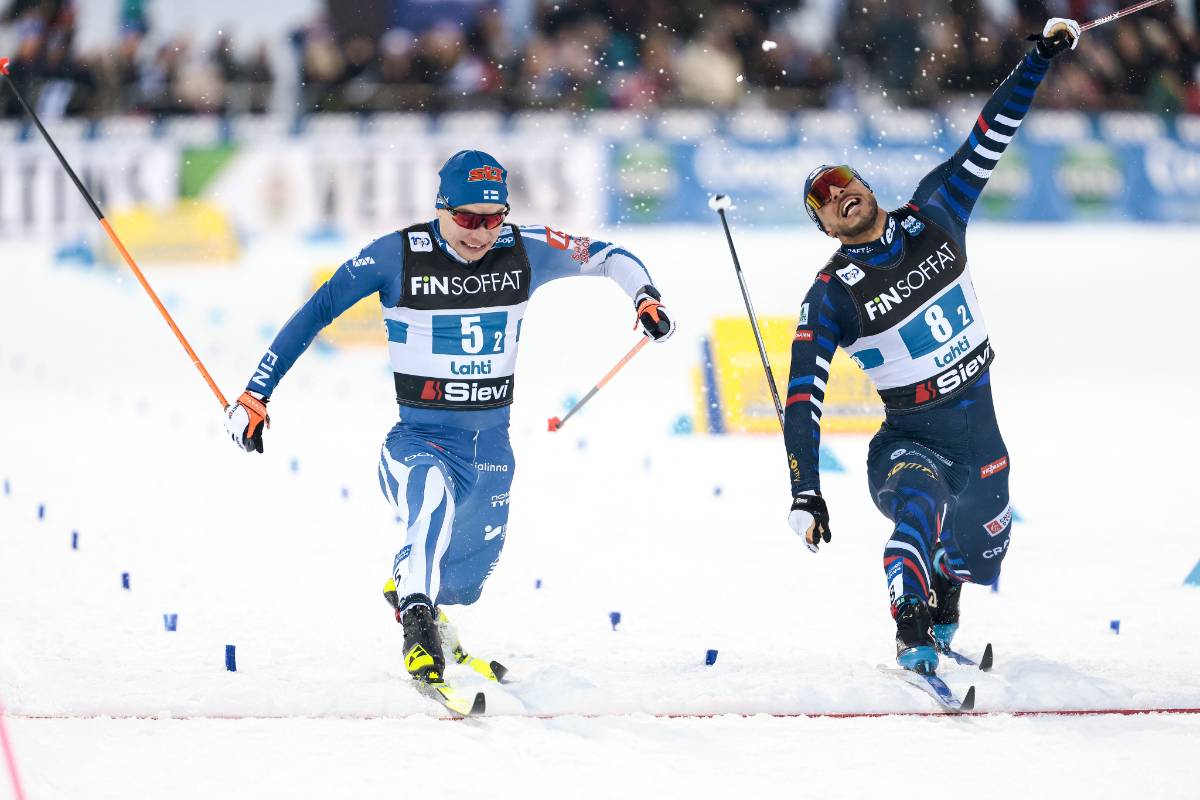
Golberg gave his teammate Klaebo a slight advantage, but with Klaebo, that was more than enough. Norway I cruised across the line in first, while Norway II, with Northug, likewise did so to take second. The French crash allowed another team into the mix, Finland I. Niskanen handed off to Vuorinen, and the anchor leg looked to stay out ahead of the resurgent move of France I’s Jouve. Into the finishing straight, it looked as if Vuorinen may just have lost the battle, but a boot throw, and a gap of just one-hundredth of a second, saw the Finland I team to an improbable dual-podium day in third place.
20 k Classic Tomorrow
Friday’s Team Sprint defined by the weird mix of factors that happen around zero degrees celsius will no doubt keep hairs raised on Saturday, as the conditions look similar for a 20 k classic individual start. The extra space between racers on course, however, won’t drive the focus from the World Cup’s Overall classifications as it makes its way into the final stretch in earnest. Jessie Diggins will look to hold off a surging Linn Svahn in the Women’s Overall classification, and more focus may start to be brought to historic third place standing in the Nation’s Cup that the US is currently holding over a Finnish team that scored two podiums Friday.
Team Sprint WOMEN’S RESULTS | MEN’S RESULTS
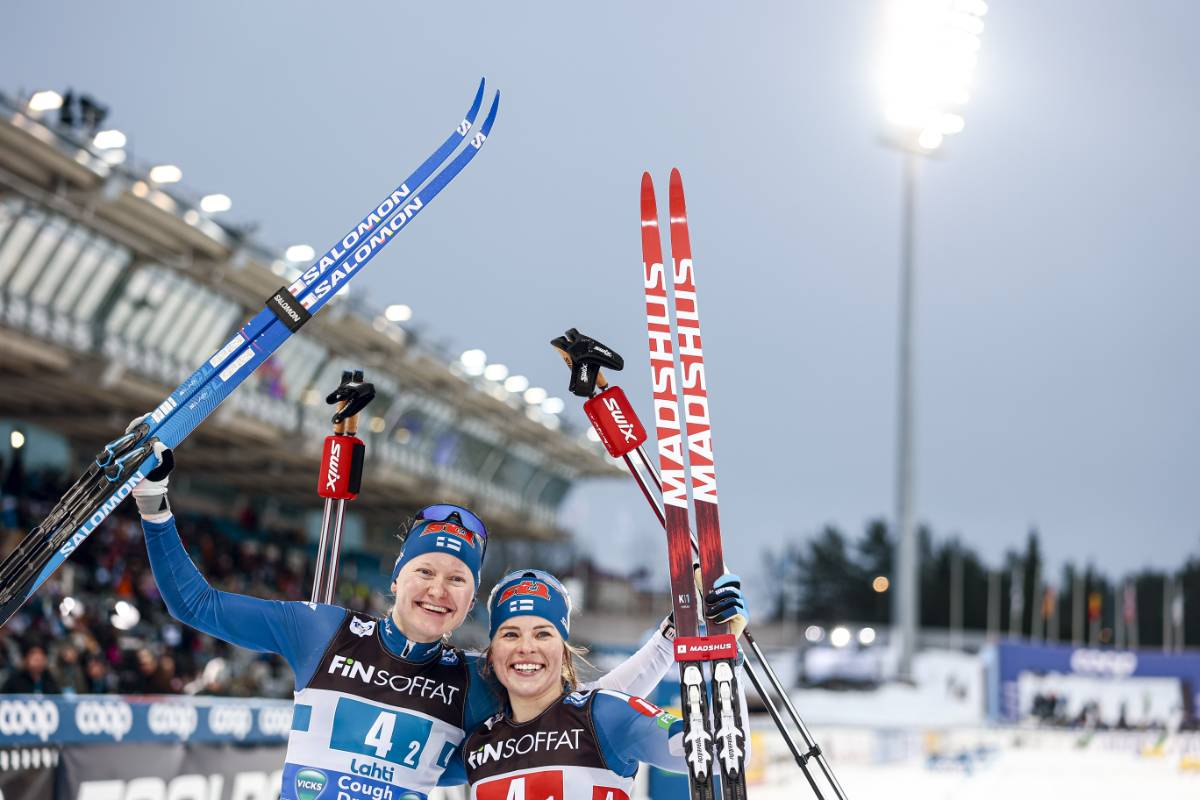
Ben Theyerl
Ben Theyerl was born into a family now three-generations into nordic ski racing in the US. He grew up skiing for Chippewa Valley Nordic in his native Eau Claire, Wisconsin, before spending four years racing for Colby College in Maine. He currently mixes writing and skiing while based out of Crested Butte, CO, where he coaches the best group of high schoolers one could hope to find.



